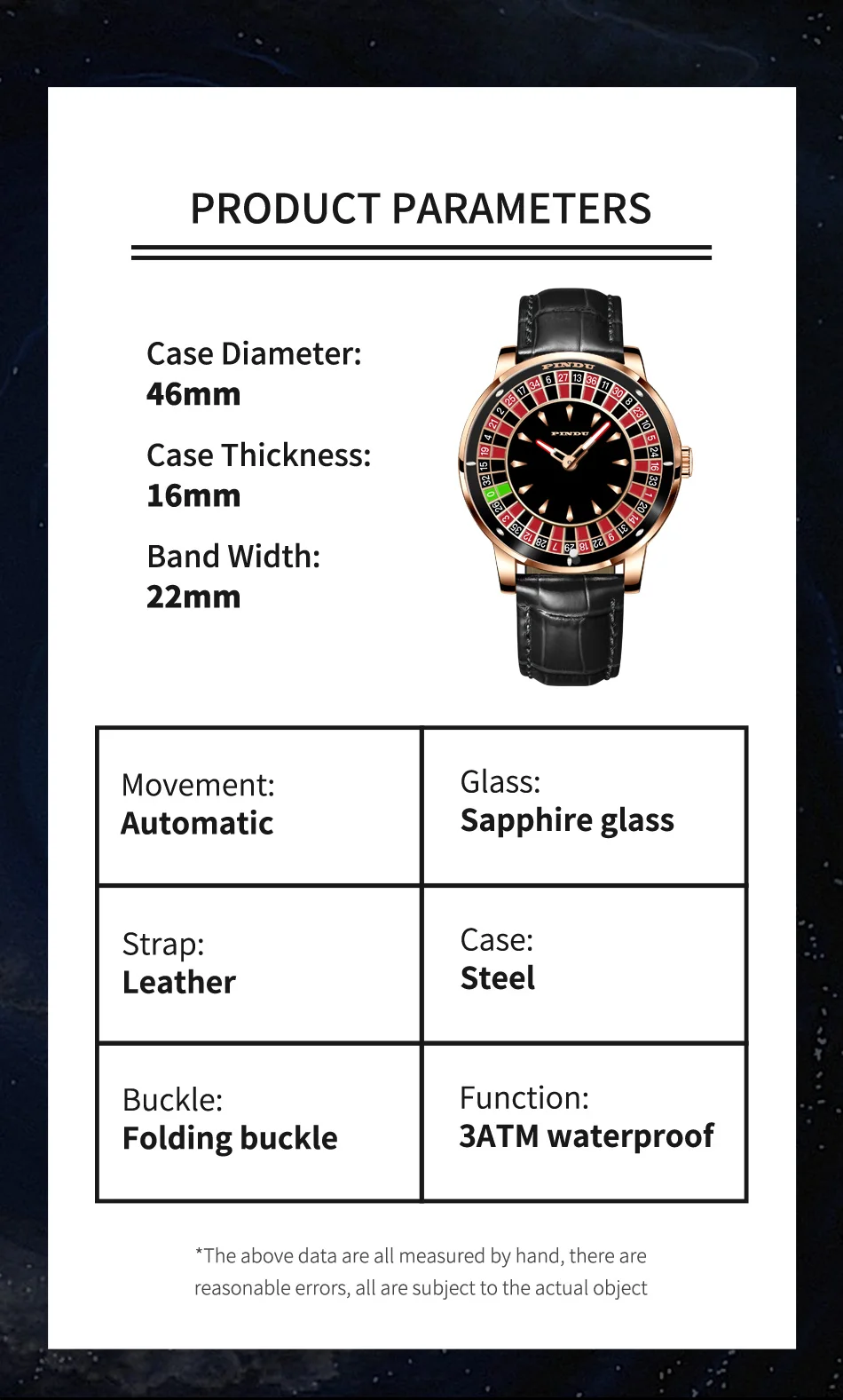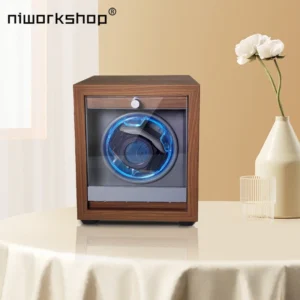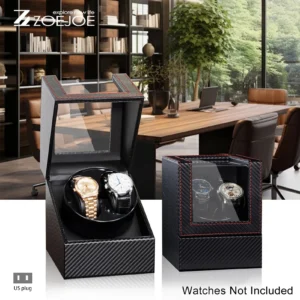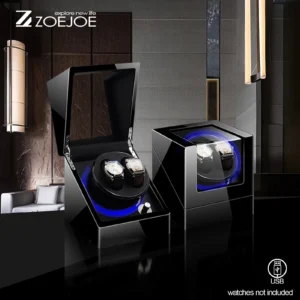Introduction: Understanding the Purpose of Watch Winder Rotation
For owners of automatic watches, watch winders serve as essential tools that maintain timepieces when they’re not being worn. Unlike quartz watches that run on batteries or manual watches that require hand-winding, automatic watches depend on movement to stay powered and accurate. A watch winder mimics the natural motion of your wrist, keeping your automatic watch running smoothly even when it’s off your wrist.
The rotation cycles of a watch winder aren’t just random movements—they’re carefully engineered patterns designed to properly maintain your timepiece’s internal mechanism. Without proper winding, automatic watches can stop running, requiring resetting of time and date functions. Even more concerning, watches left unwound for extended periods may experience lubricant deterioration, potentially causing damage to delicate components.
In this comprehensive guide, we’ll explore how watch winder rotation cycles work, why they matter, and how to ensure your precious timepieces receive exactly the right amount of movement. Understanding proper watch collection storage planning becomes increasingly important as your collection grows, with watch winders playing a crucial role in this strategy.
The Self-Winding Mechanism in Automatic Watches
How Automatic Watches Work
To understand watch winder rotation, we first need to grasp how automatic watches operate. Unlike their manual counterparts, automatic watches contain a weighted rotor—a semi-circular metal weight that pivots freely around its axis. When you move your wrist during normal daily activities, this rotor spins, transferring energy through a series of gears to wind the mainspring.
The mainspring stores this energy, much like a tightly coiled rubber band. As it gradually unwinds, it releases power that drives the watch’s movement. This stored energy is known as the “power reserve”—typically ranging from 36 to 72 hours in most modern automatic watches, though some high-end models may offer longer reserves.
The Role of Natural Movement
Your natural arm movements throughout the day provide varied directional forces that effectively wind the watch. Some watches wind only in one direction (unidirectional), while others utilize movement in both directions (bidirectional) to maximize energy capture. This natural winding process happens continuously as you wear your watch, maintaining optimal tension in the mainspring.
When a watch remains unworn and stationary, it eventually depletes its power reserve and stops. This is where watch winders become invaluable, especially for collectors with multiple timepieces in their organized watch collection who cannot wear every watch daily.
What Exactly is a Watch Winder Rotation Cycle?
A watch winder rotation cycle refers to the complete sequence of movements that a watch winder performs to effectively wind an automatic watch. This isn’t simply spinning continuously in one direction, but rather a carefully programmed pattern of movements designed to simulate natural wrist motion.
Key elements of a rotation cycle include:
- Complete Rotation: A 360-degree turn in either clockwise or counterclockwise direction
- Partial Rotations: Some winders use smaller movements (partial turns) grouped together
- Rest Periods: Intervals between active rotation periods where the winder remains still
- Directional Changes: Alternating between clockwise and counterclockwise rotations in bidirectional programs
Modern watch winders feature sophisticated programming that controls these cycle components with precision. The goal is to replicate the irregular yet consistent movements your watch would experience during normal wear, rather than subjecting it to continuous spinning that doesn’t mimic natural conditions.
High-quality watch winders offer customizable rotation cycles to accommodate different watch brands and models, each with their unique winding requirements.
The Critical Concept of Turns Per Day (TPD)
TPD (Turns Per Day) is perhaps the most important specification when discussing watch winder settings. This measurement indicates exactly how many complete 360-degree rotations the watch winder will perform over a 24-hour period.
Understanding TPD Requirements
Different watch movements have specific TPD requirements based on their design. Too few turns, and the watch won’t maintain adequate power reserve; too many turns may cause unnecessary wear on components. Most automatic watches require between 650-1800 TPD, with specific requirements varying by manufacturer and caliber.
| Watch Brand | Typical TPD Range |
|---|---|
| Rolex | 650-800 TPD |
| Omega | 650-800 TPD |
| Seiko | 650-850 TPD |
| Patek Philippe | 800-1000 TPD |
| Audemars Piguet | 800-1000 TPD |
| Tag Heuer | 800-1000 TPD |
The appropriate TPD setting ensures your timepiece maintains proper tension in the mainspring without over-winding. Automatic watches have built-in clutch mechanisms to prevent damage from over-winding, but consistently using excessive TPD settings creates unnecessary strain on these components.
Finding the correct watch winder settings for your movement type is essential for the long-term health and accuracy of your automatic timepieces.
Understanding Rotation Directions and Their Importance
Watch winders offer various rotation direction options, each serving a specific purpose depending on your watch’s movement design:
- Clockwise (CW): Rotation following the direction of a standard clock’s hands, sometimes abbreviated as “CW” on winder controls
- Counter-Clockwise (CCW): Rotation in the opposite direction of a standard clock’s hands, often labeled “CCW”
- Bi-directional: Alternating between clockwise and counter-clockwise rotations, typically in programmed intervals
Why Direction Matters
The optimal rotation direction depends on how your watch’s automatic winding mechanism is engineered:
- Unidirectional Winding Movements: Some watches wind only when the rotor spins in one specific direction. Rolex, for example, uses a unidirectional system that winds only in one direction (though the specific direction varies by model).
- Bidirectional Winding Movements: Many modern automatic watches are designed to wind when the rotor spins in either direction. Brands like Omega and Tag Heuer typically feature bidirectional winding systems.
Using the wrong direction setting won’t damage your watch but may result in inefficient winding. For watches with bidirectional movements, using a bi-directional winder setting is usually most effective. Our selection of automatic watch winders includes options with all direction settings to accommodate any timepiece in your collection.
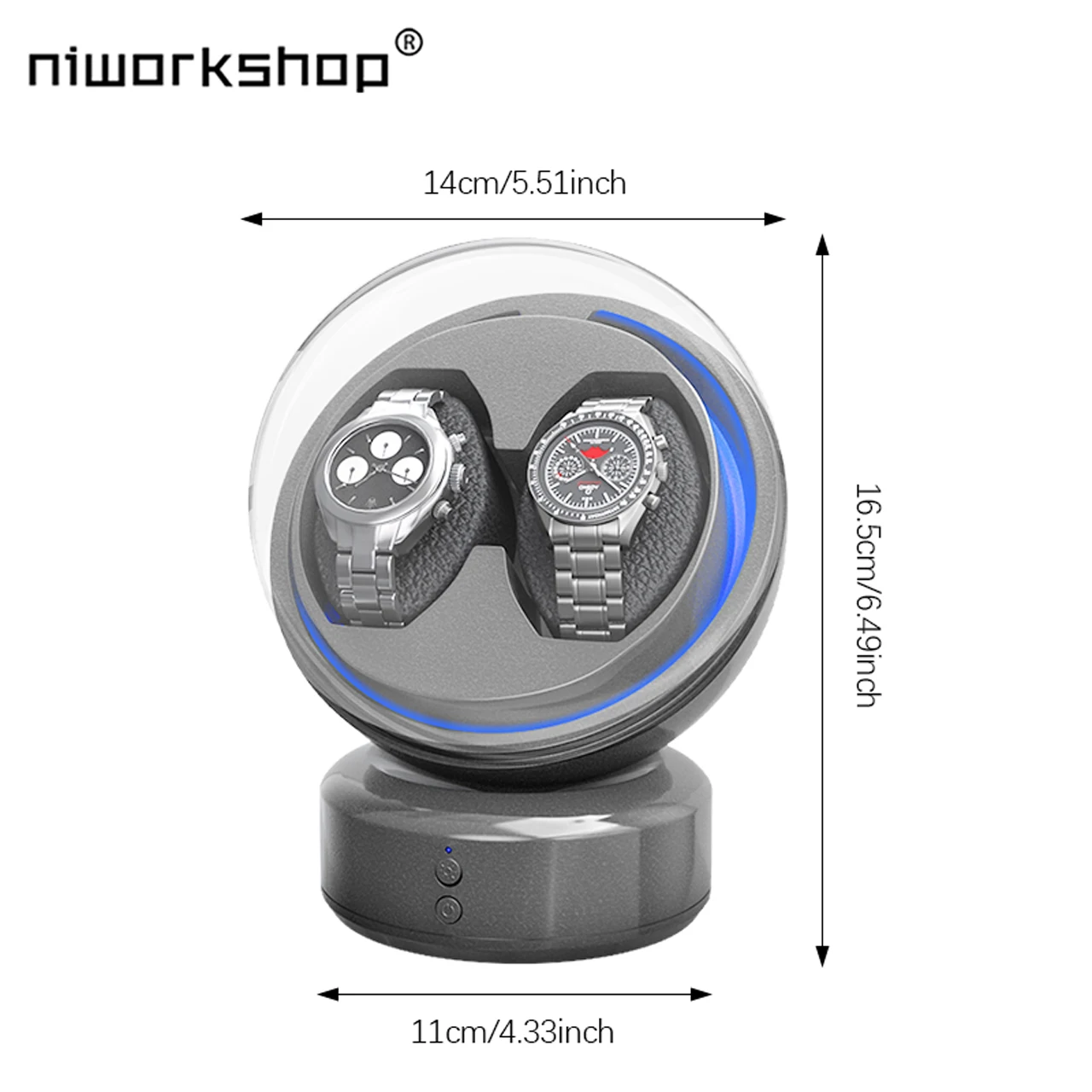
The Science Behind Intermittent Rotation Patterns
While it might seem logical that continuous rotation would keep a watch optimally wound, this approach actually fails to properly mimic natural wearing conditions. When worn on your wrist, a watch experiences periods of movement interspersed with periods of relative stillness—you don’t constantly swing your arm in circles throughout the day!
The Rest-Rotation Balance
Quality watch winders incorporate intermittent rotation patterns that typically follow a cycle such as:
– 2-5 minutes of active rotation
– 5-10 minutes of rest
– Repeat throughout the day to achieve the target TPD
This intermittent rotation approach offers several benefits:
- It more accurately simulates natural wearing patterns
- It prevents potential overwinding, despite built-in clutch mechanisms
- It reduces motor wear and power consumption in the winder itself
- It allows the watch’s escapement to function normally between winding periods
Some high-end watches contain “slip-clutch” mechanisms that disengage the winding system once optimal tension is achieved. However, continuous rotation against this mechanism creates unnecessary friction. The intermittent approach of modern watch winder rotation modes represents the most sophisticated understanding of how automatic watches function.
Inside the Watch Winder: How the Mechanisms Create Rotation
The engineering behind watch winder rotation involves several key components working together to create precise, reliable movement:
Core Mechanical Components
- Drive Motors: These provide the rotational force, with premium winders using quiet, low-vibration motors (often Japanese-made) for smooth operation
- Gear Reduction Systems: Convert the motor’s rapid rotation into slower, more controlled movement
- Controller Boards: Electronic components that regulate timing, direction, and TPD settings
- Watch Mounting Systems: Specialized cushions or holders that secure the watch while allowing free movement
Quality Differences
The distinction between basic and premium winders becomes evident in their mechanical design. Entry-level winders typically use simpler AC motors with basic controllers, while high-end luxury watch winders incorporate precision DC or stepper motors with sophisticated microprocessor-controlled programming.
The mounting system also plays a crucial role—it must hold the watch securely while allowing natural movement. Premium winders use flexible, cushioned mounts that accommodate various watch sizes and weights without applying pressure to the bracelet or clasp.
Programming Your Watch Winder: Understanding the Settings
Most modern watch winders offer programmable settings to accommodate different watch requirements. Understanding how to configure these settings ensures your timepieces receive proper care.
Common Control Interfaces
Watch winders typically provide controls through:
– Physical switches or dials
– Digital displays with button controls
– LED indicators showing selected modes
– Some premium models offer app connectivity or remote controls
Essential Settings to Configure
- TPD Setting: Select the appropriate number of turns per day (usually presented as ranges like 650, 750, 850, 1000, 1200, 1500)
- Rotation Direction: Choose between clockwise, counter-clockwise, or bidirectional
- Time Settings: Some winders allow programming specific active hours or rest periods
- Multiple Watch Settings: Advanced multi-watch winders may allow individual settings for each watch position
The process for setting up your winder varies by model, but generally involves selecting TPD first, then rotation direction, followed by any additional timing options. Understanding how often a watch winder rotates in different settings helps ensure you’re providing optimal care for your timepieces.
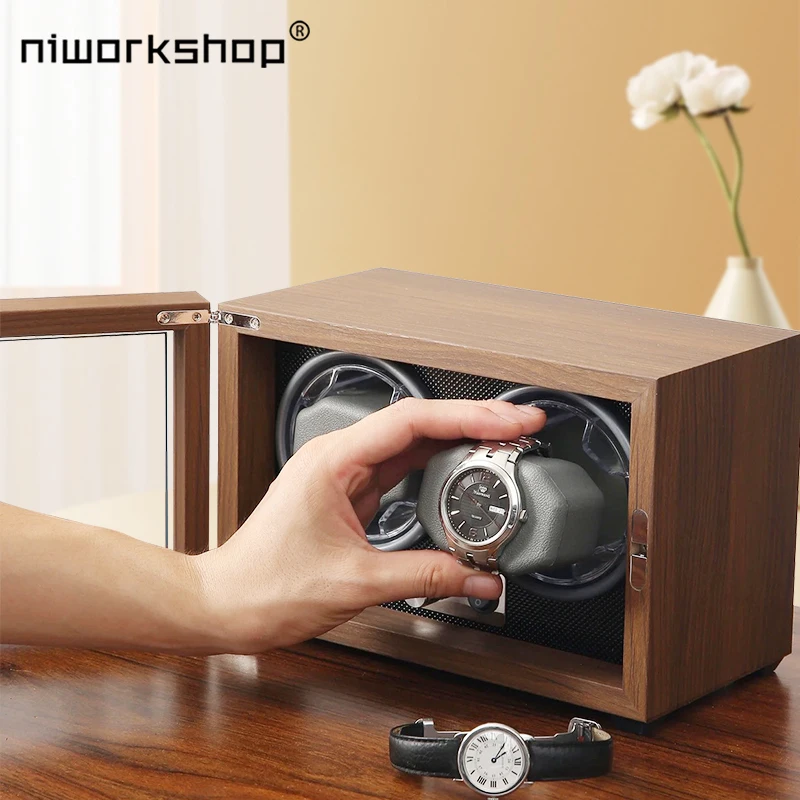
Finding the Right Settings for Your Specific Watch
Determining the optimal winder settings for your particular timepiece requires some research, but the effort ensures proper maintenance of your valuable watches.
Resources for Finding Correct Settings
- Manufacturer Documentation: The watch’s manual often specifies recommended TPD and direction
- Brand Websites: Many luxury watch brands provide winding specifications in their service sections
- Online Databases: Several websites compile TPD requirements by brand and model
- Watch Forums: Communities of enthusiasts often share specific settings that work well
Testing When Information Isn’t Available
If you can’t find specific recommendations for your watch model:
1. Start with a conservative TPD setting (around 650-800)
2. Use bidirectional rotation if you’re unsure about direction requirements
3. Check your watch after 24-48 hours to see if it maintains accurate time
4. Gradually increase TPD if the watch loses power reserve
A single watch winder can be particularly useful for testing settings before placing a watch in a multi-winder storage system, allowing you to observe how your specific timepiece responds to different rotation programs.
Automatic Watch Winder, Luxury Watch Winder, Single Watch Box
$307.39 Select options This product has multiple variants. The options may be chosen on the product page4 Watch Winder, 6 Watch Box, Automatic Watch Winder
$512.31 Select options This product has multiple variants. The options may be chosen on the product pageAutomatic Watch Winder, Single Watch Winder, Wooden Watch Holder
$201.76 Select options This product has multiple variants. The options may be chosen on the product pageAutomatic Watch Winder, Leather Watch Travel Case, Single Watch Winder
$146.30 Select options This product has multiple variants. The options may be chosen on the product pageAutomatic Watch Winder, Double Watch Winder, Leather Watch Boxes
$147.60 Select options This product has multiple variants. The options may be chosen on the product pageAutomatic Watch Winder, Double Watch Winder
$206.18 Select options This product has multiple variants. The options may be chosen on the product page
Benefits of Proper Rotation Cycles for Watch Longevity
Using the correct rotation settings for your automatic watches offers several important benefits that contribute to their longevity and performance:
Mechanical Health Benefits
- Optimal Lubricant Distribution: Regular, appropriate movement ensures oils remain evenly distributed throughout the movement, preventing dry spots that can increase friction and wear
- Mainspring Conditioning: Maintains proper tension in the mainspring, preventing it from remaining fully wound or completely unwound for extended periods
- Complication Maintenance: For watches with calendar functions, chronographs, or other complications, regular movement helps keep all mechanisms functioning smoothly
- Consistent Timekeeping: Watches that remain wound tend to maintain better accuracy than those repeatedly allowed to stop and restart
When combined with proper long-term watch storage protection, appropriate winder settings can significantly extend the service intervals for your timepieces while maintaining their performance and accuracy.
Common Misconceptions About Watch Winder Rotation
Several myths persist about watch winder rotation that can lead to suboptimal care for automatic timepieces:
Myth: Continuous rotation is better than intermittent
Fact: Intermittent rotation more closely mimics natural wear patterns and reduces unnecessary strain on the watch’s winding mechanism. Continuous rotation doesn’t improve winding efficiency and may cause premature wear.
Myth: Higher TPD settings wind watches faster and better
Fact: Using excessive TPD settings doesn’t improve performance and may increase wear on internal components. The correct TPD range is specific to each watch movement design.
Myth: All automatic watches can use the same winder settings
Fact: Different watch movements have specific winding requirements based on their design. Using a one-size-fits-all approach may result in under-winding or unnecessary wear.
Myth: Watch winders cause magnetism issues in watches
Fact: Quality modern watch winders use shielded motors that pose minimal magnetic risk to watches. The magnetic fields generated are typically too weak to affect watch movements at the distance maintained in proper winder designs.
If you experience issues with your watch winder, our guide on troubleshooting common watch winder problems can help identify and resolve rotation-related concerns.
Advanced Features in Modern Watch Winders
Today’s premium watch winders offer sophisticated features that go well beyond basic rotation functions:
Technology Enhancements
- Programmable Memory: Ability to store multiple custom programs for different watches
- Smart Timing: Advanced rest-rotation cycles that more precisely mimic natural wear patterns
- Sleep Mode Programming: Set specific active hours to reduce noise and power consumption
- Battery Backup: Maintains programs during power outages to ensure continuous operation
- Ultra-Quiet Motors: Advanced motor technology that operates at near-silent levels
These features are particularly valuable for serious collectors with diverse collections. High-end winders often incorporate precision Japanese motors and microprocessor controls that maintain exact TPD settings and rotation timing.
The integration of these technologies has transformed watch winders from simple rotation devices into sophisticated instruments that complement luxury watch storage setups for discerning collectors.
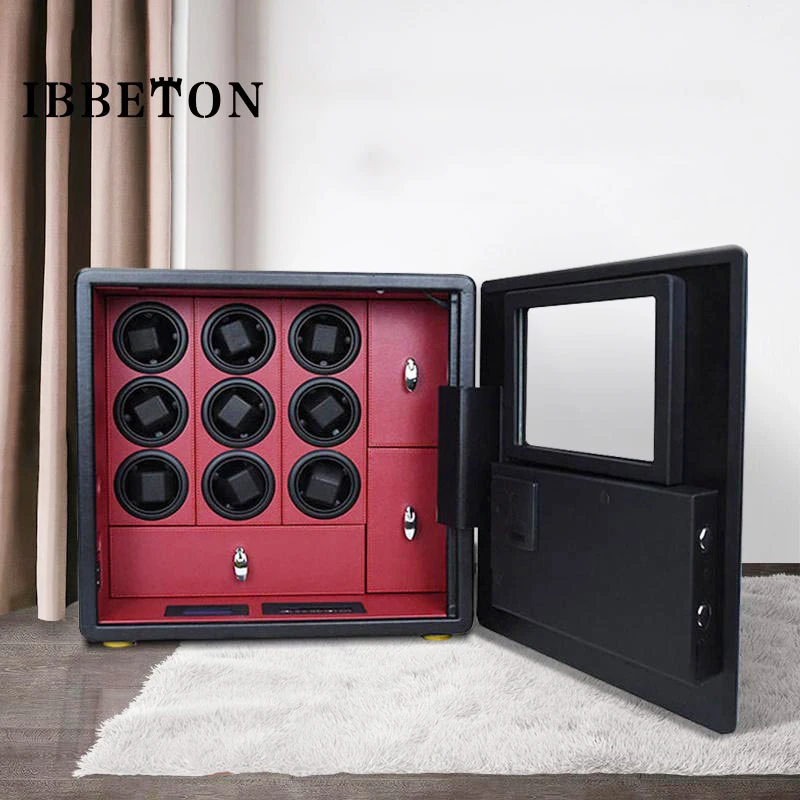
Troubleshooting Watch Winder Rotation Issues
Even with the best watch winders, occasional issues may arise that affect proper rotation and winding. Recognizing these problems early helps ensure your watches receive proper care.
Common Issues and Solutions
Problem: Watch stops after being in the winder for 1-2 days
Solution: Increase TPD setting or change rotation direction; check that the watch is properly secured on the cushion
Problem: Watch runs fast after being in the winder
Solution: The TPD may be too high; reduce to a lower setting or use a different rotation mode
Problem: Winder makes excessive noise during rotation cycles
Solution: Check for proper cushion fit; ensure the winder is on a level surface; may indicate motor wear in older units
Problem: Winder rotates but watch doesn’t maintain power
Solution: Verify the watch is positioned correctly (crown position matters for some watches); the watch may need service if mainspring isn’t holding tension
For collectors with multiple timepieces, integrating proper winder systems into your overall watch storage ideas ensures each piece receives appropriate care while maintaining an organized collection.
At Daily Accents, we understand that proper watch winder rotation is essential for maintaining the performance and longevity of fine automatic timepieces. By understanding the science behind rotation cycles and choosing the right settings for your specific watches, you ensure that your valuable timepieces remain in optimal condition, ready to wear whenever you choose them from your collection.

